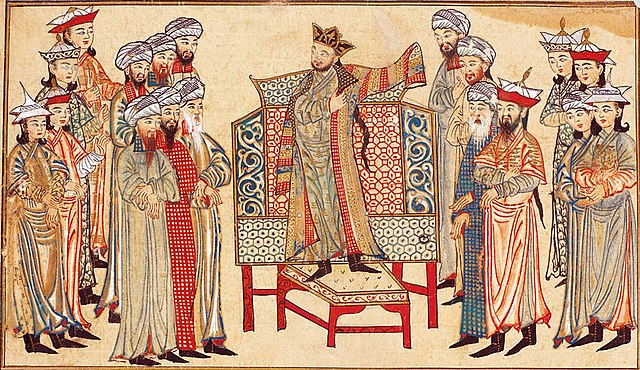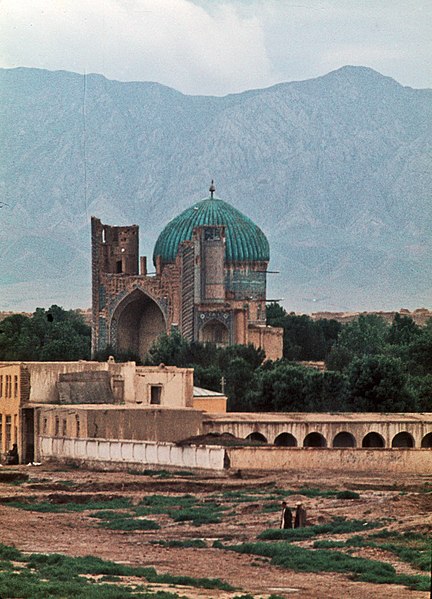Muslim conquests of Afghanistan
The Muslim conquests of Afghanistan began during the Muslim conquest of Persia as the Arab Muslims migrated eastwards to Khorasan, Sistan and Transoxiana. Fifteen years after the battle of Nahāvand in 642 AD, they controlled all Sasanian domains except in Afghanistan. Fuller Islamization was not achieved until the period between 10th and 12th centuries under Ghaznavid and Ghurid dynasties who patronized Muslim religious institutions.
Minaret of Jam built by the Ghurid dynasty
Names of territories during the Caliphate
The Turk Shahi kingdom of Kabul in 700 AD
Mahmud receives a robe from Caliph Al-Qadir; painting by Rashid-al-Din Hamadani
Balkh is a town in the Balkh Province of Afghanistan, about 20 km (12 mi) northwest of the provincial capital, Mazar-e Sharif, and some 74 km (46 mi) south of the Amu Darya river and the Uzbekistan border. Its population was estimated to be 138,594 in 2021-22 by the Afghan National Statistic and Information Authority. Listed as the current 8th most populous city in the country, 2024 estimates set the population of Balkh at 114,883.
Ruins of the Green Mosque (Dari: مَسجدِ سَبز, romanized: Masjid-i Sabz) Pashto شین جومات romanized: |sheen Jumat}} [citation needed] named for its green-tiled Gonbad (Dari: گُنبَد, dome), in July 2001
Ambassador from Balkh (白題國 Baitiguo) to the Tang dynasty, Wanghuitu (王會圖), circa 650 CE.
A dirham of the Abbasid Caliphate minted in Balkh
The Green Mosque of Balkh





![Ruins of the Green Mosque (Dari: مَسجدِ سَبز, romanized: Masjid-i Sabz) Pashto شین جومات romanized: |sheen Jumat}} [citation needed] named for its gre](https://upload.wikimedia.org/wikipedia/commons/thumb/c/c0/15c_green_mosque.jpg/401px-15c_green_mosque.jpg)


